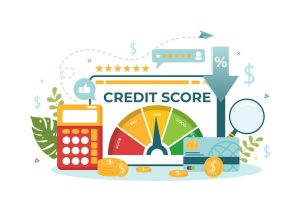
Start Earning Today with Your Blog: The Ultimate Blog Launch Checklist Unveiled

BLOGGING
Kickstart Your Own Blog Cashflow: A Quick Guide
By
Marc Andre
Last Updated
December 1, 2021
Disclaimer: This page may contain sponsorship links. Here’s how we generate income.
Launching a blog for the first time can seem daunting, but don’t worry. It’s not as hard as you think. Here’s a simplified checklist to kick off your blogging journey, so you won’t miss out on any crucial steps.
1. Pick Your Niche:
Start by identifying the theme of your blog. If your aim is to generate income, focus on a specific niche, such as business, finance, travel, family and parenting, food and cooking, beauty, fashion, health, fitness, and more. Your ideal niche should reflect your interests, experience, and revenue potential.
2. Research Other Blogs in Your Niche:
Do some homework. Find other blogs within your chosen niche and list them out in a spreadsheet. This will give you insights into popular topics, post types, design styles, money-making strategies, and the most used social networks. It also paves the way to network with other bloggers.
3. Define Your Avatar:
Your avatar is your ideal reader. Having a well-defined avatar helps in delivering relevant content and helps shape your blog’s tone, design style, and the social network strategy.
4. Name Your Blog and Domain:
Your blog’s name and domain name should preferably be the same. Though finding an available .com domain may be challenging, it’s worth a shot to avoid confusion.
5. Understand Your Why:
Ask yourself why you want to start a blog. Is it to create a source of income, express your thoughts, or share experiences? Remembering your ‘why’ can help motivate you during tough times.
6. Set Your Blog Apart:
With countless blogs online, yours needs to stand out. This could be through your unique perspective or voice, personal stories, expertise, or creative design elements.
7. Get Your Domain Name and Hosting:
To retain maximum control over your blog, opt for your own domain and hosting. Websites such as Bluehost offer affordable packages.
8. Install WordPress:
Use WordPress, a free, user-friendly content management system (CMS) that can be installed in mere minutes.
9. Install an SSL Certificate:
SSL certificates protect your website and visitors. Web hosts like Bluehost offer these for free.
10. Choose and Customize Your WordPress Theme:
Pick a WordPress theme that determines your blog’s design and layout. Premium themes generally offer customization options and customer support.
11. Create a Logo:
Although optional, having a logo can enhance your brand recognition. You can get one designed professionally without breaking the bank.
12. Create a Favicon:
A favicon is the small image on a browser tab. Use a square image, proportioned ideally at 192 px by 192 px, and upload it by going to Appearance > Customize > Site Identity on your WordPress dashboard.
13. Change Permalinks to “Post Name”:
In WordPress, go to Settings > Permalinks and select “post name” as this is better for search engine optimization.
14. Create an Email Address at Your Domain:
Creating an email address with your domain name can enhance your professional image.
15. Install Google Analytics:
Google Analytics grants access to in-depth stats and insights about your website’s visitors, thereby helping with your blogging strategy.
16. Register with Google Search Console:
Another valuable free resource that provides information about your website’s Google visibility.
17. Install Yoast SEO WordPress Plugin:
This plugin assists with aspects of search engine optimization and is simple to set up.
18. Set Up Gravatar:
Having an image associated with your author bio and comments on your blog posts makes your presence more personal and relatable.
19. Create Key Pages:
The “About” and “Contact” pages are essential elements of your blog. An ‘About’ page helps visitors connect with you, and a ‘Contact’ page simplifies communication with your readers.
20. Create a Privacy Policy Page:
This legally necessary page protects you and your visitors. It’s made easy with free online privacy policy generators.
21. Establish Yearly Goals:
Specific, measurable goals can keep you focused on achieving your desired blogging results.
22. Set Up an Email List:
An email list is valuable for retaining loyal followers. ConvertKit is a recommended provider for managing this.
23. Add Opt-in Forms to Your Website:
Once your email list is set up, add opt-in forms to your site to let your visitors subscribe to it.
24. Choose Your Monetization Strategy:
Identify reliable ways to earn money from your blog. Observe other blogs for monetization ideas. Some options include advertising, affiliate programs, sponsored content, offering services, or selling digital products.
25. Set Up Social Media Profiles:
Social media can increase your blog traffic, so register on major platforms using your blog name.
26. Decide Your Blog Post Categories:
Structuring your blog with clear categories makes it user-friendly. Identify the topics to cover within four or five main categories.
27. Brainstorm Blog Post Ideas:
Always have a list of potential blog posts at hand. Aim to have at least 100 ideas to start with.
28. Write a Few Blog Posts Before Launching:
Prepare 3-5 posts before launching to assure visitors have more to browse.
29. Launch Your Blog:
Now all that’s left is to post your initial blogs and officially launch your platform!
30. Network in Your Niche:
Networking is vital for your blog’s success. Engage with other bloggers in your niche by commenting on their blogs, sharing their posts, linking them into your posts, or collaborating on mutual projects.
31. Join Relevant Facebook Groups:
Joining Facebook groups related to your blog or blogging in general can offer networking and traffic opportunities.
That covers the key steps to launch your money-making blog. The journey ahead is promising and exciting. Happy blogging!


